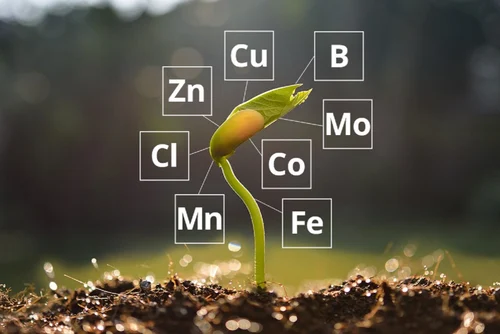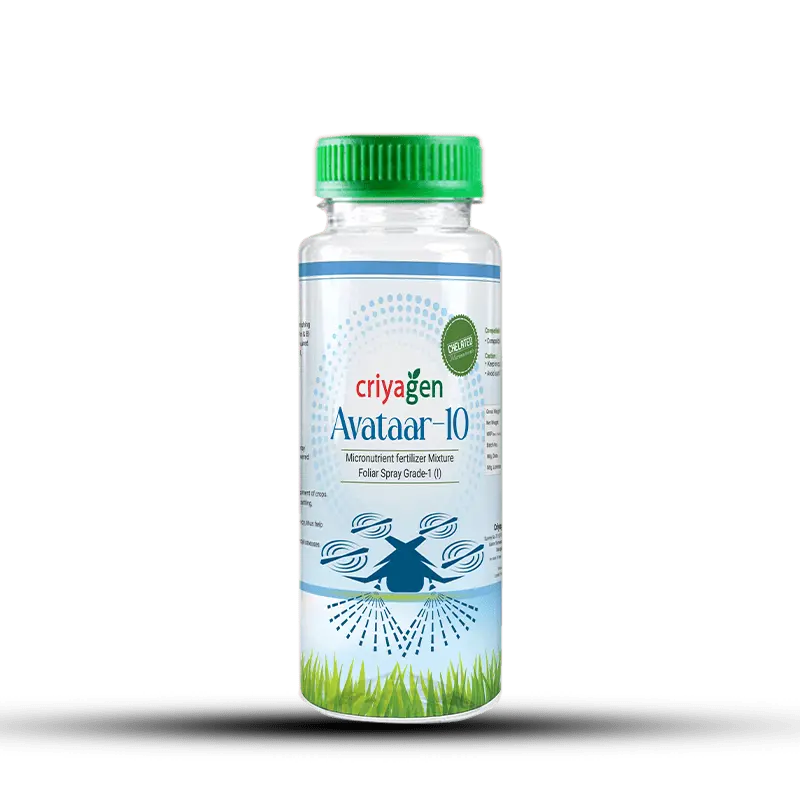Are you tired of using many sticking agents with your micronutrient fertilizer? But again, your plant starts showing micronutrient deficiency symptoms because of the unavailability of nutrients that you sprayed. Yes, Even though you used the best micronutrient fertilizer for your plants, it will be lost by the runoff after the spraying. To avoid this, you should choose a chelated micronutrient fertilizer for your plants. This blog tells you how to get the best chelated micronutrient fertilizer for your plants.
What Are Chelated Micronutrients?
Imagine you have this central metal ion, like a superstar in the middle of a stage. Now, picture a bunch of molecules, these organic molecules or ligands, as fans surrounding the superstar. But they’re not just standing there, they’re like a claw, gripping onto the metal ion from all sides. That’s what makes it a chelate, kind of like a claw holding onto something tightly.

Chelated micronutrients are essential minerals that are chemically bound to organic molecules, such as amino acids, organic acids, or peptides, to create a complex that plants can easily absorb.

What Are The Common Chelated Micronutrients?
Some common chelated micronutrients include:
Iron (Fe) – chelated Iron enhances photosynthesis.
Zinc (Zn) – chelated Zinc often improves nutrient absorption and growth.
Manganese (Mn) – chelated Manganese prevents nutrient deficiencies and promotes growth. It’s also vital for photosynthesis and the production of plant hormones.
Boron (B) – Chelated boron increases flower production and retention, pollen tube elongation and germination. It also promotes seed and fruit development.

Read more about micronutrient deficiencies here.
How Chelated Micronutrient Fertilizers Will Help Farmers?
- Quick absorption: When they are chelated, micronutrients are absorbed by plant leaves more quickly than when applied as crystalline salts, becoming available to plants rapidly.
- Tolerance: Plant leaves are normally very tolerant of chelates. Whereas, mineral salts often cause leaf burning after foliar application.
- Good solubility: Mineral chelates normally dissolve very easily in water. They form clear solutions, without sediments or precipitates. This guarantees a high level of effectiveness and stops the nozzle from becoming blocked.
- High stability: Chelated fertilizers are stable, even under adverse soil conditions.
- Good miscibility: Chelated fertilizers mix well with many crop protection products, as well as with other foliar fertilizers.
Overall, chelated micronutrients help to improve nutrient uptake, stability, and effectiveness in a variety of applications. Chelated micronutrients can help plants grow stronger, healthier and more resistant to pests and diseases.
How to Choose the Best Chelated Micronutrient Fertilizer for Your Farm?
Choosing the right chelated micronutrient fertilizer for your crops depends on several factors. Most importantly, you need to know the specific micronutrients your crops need, the soil conditions in your field, and the growth stage of your crops.
The type of chelate form used is also important for the application. That is the EDTA form. EDTA helps to surround the inorganic nutrients in the plants and ensures the safety of natural nutrients. It gives an organic coating to the crops.
Avataar-10: Why It’s The Best Micronutrient Fertilizer for Your Farm?
Criyagen Avataar-10 is a Chelated Micronutrient fertilizer and its plant nourishing formulation supplies 10 essential primary, chelated secondary and micronutrients that are essential for the growth and development of all agricultural, horticultural, plantation and ornamental crops.

It includes Zinc (as Zn-EDTA): 3.0% min, Ferrous (as Fe-EDTA): 2.0% min, Manganese (as Mn EDTA): 1.0% min and Boron (as B EDTA): 0.5% min.
Why Criyagen Avataar-10?
- As a chelated micronutrient fertilizer, Avataar-10 supplies essential primary, secondary and micronutrients in a balanced proportion.
- It corrects nutrient deficiency and helps in increasing the quality of the yield.
- Chelated boron in solution promotes the flowering and fruit setting. It increases the fruit size and yield of the crop.
How to Use Criyagen Avataar-10?
- Drone Application: 50 grams per liter of water
- Foliar Application: 10 grams per liter of water
- Drip Application: 4 – 5 grams per liter of water
Lastly, whether you are cultivating fruits, vegetables, grains, oilseeds, forage crops, ornamentals, hydroponic crops or field crops, incorporating chelated micronutrient fertilizers into your farming practices can lead to healthier plants, improved yields, and overall agricultural success.
Take the next step in maximizing your crop’s potential. Click here for your Criyagen Avataar-10 which improves the efficiency of application and makes maximum nutrients available to the plants.